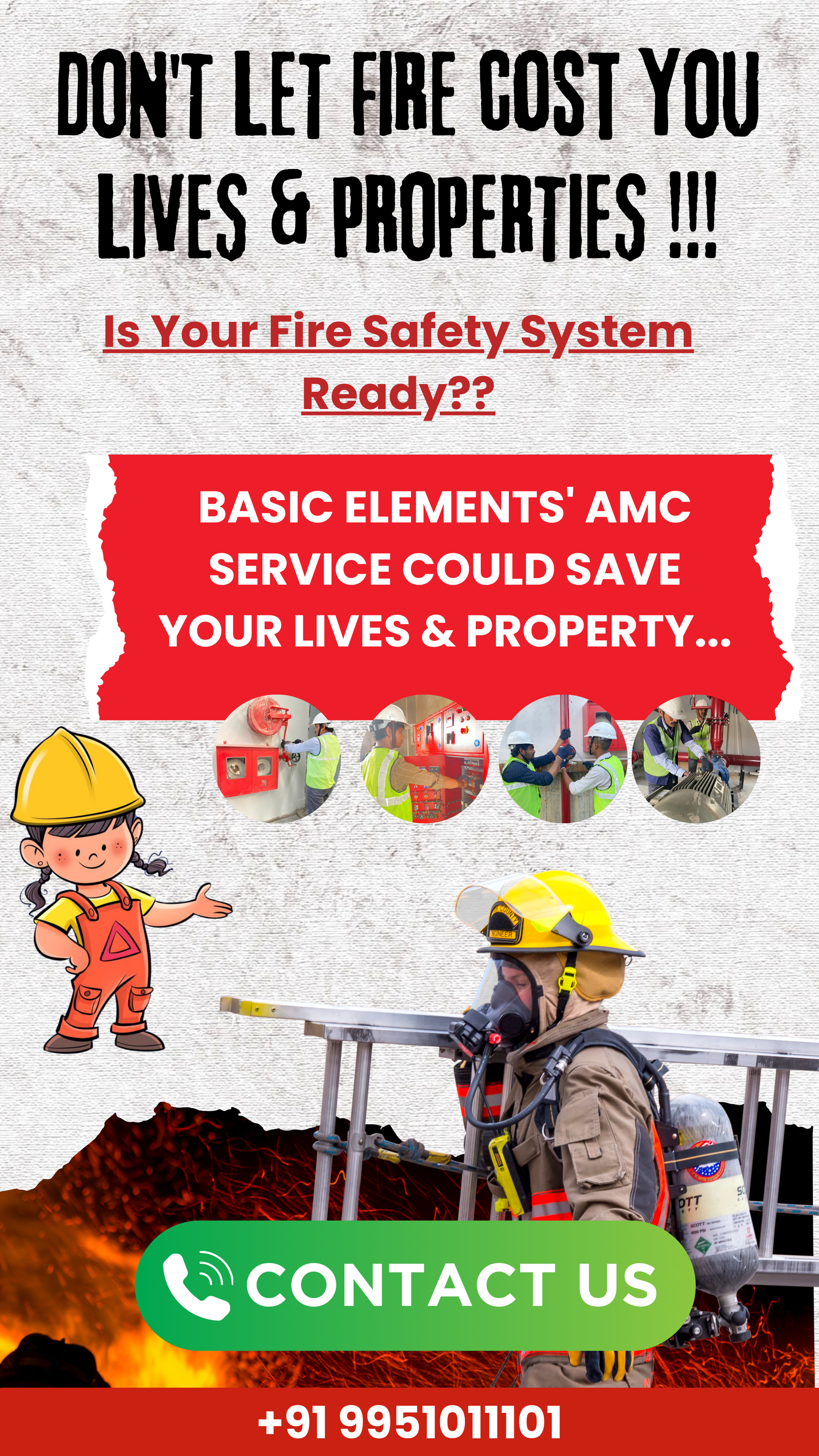Fire safety is of utmost importance in the manufacturing industry. With numerous hazards present in manufacturing processes, ensuring workplace safety and preventing industrial fires are critical to protecting employees, property, and the overall business operations.
This article highlights the significance of fire safety in manufacturing processes and emphasizes the need for effective fire prevention measures. By understanding these key aspects, manufacturers can create a safer working environment while also minimizing potential risks and losses associated with fires.
The Common Causes of Fire Safety in Manufacturing Processes Facilities and How to Prevent Them
Fires in manufacturing facilities can have devastating consequences, including loss of life, property damage, and business disruptions. It is crucial for businesses to understand the common causes of fires and implement preventive measures to minimize the risk.
Here are some key factors that can lead to Fire Safety in Manufacturing Processes facilities and ways to prevent them:
1. Fire hazards: Identification and control of fire hazards should be a top priority. These hazards may include improper storage of flammable materials, blocked fire exits or sprinkler systems, or inadequate fire safety training for employees. Regular inspections and maintenance procedures should be implemented to ensure compliance with fire safety regulations.
2. Electrical fires: Electrical malfunctions such as overloaded circuits, faulty wiring, or improper use of electrical equipment can result in electrical fires. To prevent these incidents, it is important to regularly inspect and maintain electrical systems, use appropriate circuit protection devices like circuit breakers or fuses, avoid overloading circuits by distributing loads evenly across multiple outlets, and train employees on safe electrical practices.
3. Chemical fires: Manufacturing facilities often deal with various hazardous chemicals that can ignite under certain conditions. Proper handling and storage of chemicals are essential in preventing chemical fires. This includes providing adequate ventilation systems to control the build-up of flammable vapors, storing chemicals according to their compatibility requirements Fire Safety in Manufacturing Processes in well-ventilated areas away from ignition sources, implementing proper labeling systems for easy identification of hazardous substances, and conducting regular employee training on chemical handling procedures.
4. Equipment malfunctions: Malfunctioning machinery or equipment can generate heat that may lead to a fire if not properly maintained or operated within specified limits. Regular inspection programs should be established to identify potential issues before they escalate into major problems. Fire Safety in Manufacturing Processes Adequate lubrication, cleaning routines, calibration checks on sensors/thermostats/controls are necessary preventive measures.
Preventive measures that apply across all these causes include:-
- Implementing an effective emergency response plan with clear evacuation routes.- Installing and regularly testing fire detection and suppression systems, such as smoke detectors, fire alarms, sprinklers, or fire extinguishers.
- Conducting regular employee training on fire safety protocols including proper use of firefighting equipment and evacuation procedures.
- Maintaining clear access to firefighting equipment and ensuring they are regularly inspected and serviced.- Establishing a culture of safety by promoting awareness among employees about potential fire risks. By proactively addressing these common causes of fires in manufacturing facilities through preventive measures, businesses can significantly reduce the risk of fires and create a safer working environment for employees
The Role of Fire Safety Training and Education for Employees
Fire safety training and education for employees play a crucial role in ensuring their safety and well-being in the workplace. By equipping employees with the necessary knowledge and skills, companies can effectively prevent and respond to fire emergencies.
One of the primary objectives of fire safety training is to educate employees about potential fire hazards in the workplace. This includes familiarizing them with common causes of fires, such as electrical malfunctions or improper handling of flammable materials.
By understanding these risks, employees can take proactive measures to prevent fires from occurring. Emergency response protocols are another important aspect covered in fire safety training. Employees learn how to react swiftly and appropriately during a fire emergency, including knowing when and how to sound the alarm, evacuate safely, and seek medical assistance if needed.
This knowledge helps minimize panic, confusion, and potential injuries during critical situations. Evacuation drills are typically conducted as part of fire safety training programs. These drills simulate real-life scenarios where employees practice evacuating the premises efficiently while following designated evacuation routes. Regularly conducting evacuation drills not only ensures that employees are familiar with evacuation procedures but also identifies any weaknesses or areas for improvement within existing emergency plans.
Fire extinguisher use is also an essential component of employee fire safety education. Training sessions provide guidance on how to select an appropriate extinguisher for different types of fires (e. g., Class A, B, C) and instruct individuals on proper usage techniques.
Knowing how to Fire Safety in Manufacturing Processes handle a fire extinguisher correctly empowers employees to tackle small fires effectively before they escalate. In summary, investing in comprehensive fire safety training programs enables companies to create a safer work environment by educating their workforce about potential hazards, emergency response protocols, evacuation procedures through drills while providing them with valuable skills like using firefighting equipment confidently.
The Essential Fire Safety Equipment Every Manufacturing Facility Should Have
Fire safety is of utmost importance in a manufacturing facility to protect employees, equipment, and property.
To ensure a safe working environment, here are some essential fire safety equipment that every manufacturing facility should have:
1. Fire Extinguishers: These portable devices are crucial for quickly extinguishing small fires before they spread. It is important to have the appropriate type of fire extinguisher for different types of fires (e. g., Class A, B, C) present in the facility.
2. Fire Alarms and Detection Systems: Early detection is key to minimizing the damage caused by a fire. Installing reliable fire alarms and detection systems throughout the facility will help alert occupants immediately in case of any smoke or flames.
3. Sprinkler Systems: Sprinklers are an effective means of controlling and suppressing fires by releasing water when heat activates them. Having a well-designed sprinkler system can significantly reduce the risk of extensive damage or injury during a fire incident.
4. Emergency Lighting: In case of power failure during a fire emergency, emergency lighting comes into play by providing sufficient illumination for evacuation routes and exits within the facility. It’s worth noting that maintaining these systems regularly is equally important as their installation. Regular inspections, testing procedures, and maintenance should be undertaken to ensure their optimal functionality at all times. Fire Safety in Manufacturing Processes By equipping your manufacturing facility with these essential fire safety equipment items, you can help mitigate potential risks and enhance overall safety preparedness against fires.
Implementing a Robust Fire Safety Management System in Manufacturing Processes
Implementing a robust fire safety management system is crucial in manufacturing processes to ensure the safety of employees, protect valuable assets, and comply with relevant regulations.
Here are some key components to consider:
1. Risk Assessment and Management Strategies: Conduct thorough risk assessments to identify potential fire hazards in your manufacturing facility. This includes analyzing factors such as flammable materials, ignition sources, electrical systems, and storage practices. Develop strategies to minimize these risks through measures like proper storage methods, regular equipment maintenance, adequate ventilation systems, and effective housekeeping practices.
2. Fire Safety Audits and Inspections: Regular audits and inspections help evaluate the effectiveness of your fire safety measures and identify areas for improvement. Ensure that all fire protection systems (e. g., sprinklers, alarms) are regularly tested and maintained according to relevant standards. Additionally, inspect emergency exits, evacuation routes, firefighting equipment availability/accessibility regularly.
3. Incident Reporting and Investigation Procedures: Establish clear protocols for reporting any fire-related incidents promptly. Encourage employees to report even minor incidents or near misses as they can provide valuable insights into potential hazards or weaknesses in the system. Investigate each incident thoroughly to determine its root cause(s) so that appropriate corrective actions can be taken.
4. Employee Training: Provide comprehensive training programs on fire safety procedures for all employees involved in manufacturing processes – from operators to supervisors. Train them on how to recognize potential hazards, use firefighting equipment correctly (if applicable), evacuate safely during an emergency situation while minimizing panic or confusion.
5. Emergency Response Plan: Develop a detailed emergency response plan tailored specifically for your manufacturing facility’s needs – considering factors like building layout/designs , number of occupants etc. It should include procedures for reporting emergencies; ensuring safe evacuation; assigning roles/responsibilities during an incident; contacting emergency services; establishing assembly points/areas outside the facility; conducting headcounts after evacuations etc.
6. Ongoing Maintenance & Review: Regularly review and update your fire safety management system to ensure its effectiveness as processes, equipment, or regulations change. Conduct drills and simulations periodically to test the emergency response plan and identify areas for improvement. Remember, it is critical to involve all stakeholders in the implementation process, including management, employees, and fire safety professionals.
By implementing these strategies and continuously Fire Safety in Manufacturing Processes monitoring your fire safety management system, you can create a safe working environment for everyone involved in manufacturing processes.
The Benefits of Regular Maintenance and Inspection for Fire Safety Systems
Regular maintenance and inspection for Fire Safety in Manufacturing Processes play a crucial role in ensuring the overall effectiveness and reliability of these systems.
Here are some key benefits of carrying out scheduled maintenance checks, receiving alerts for system failures or malfunctions, and maintaining proper documentation through maintenance logs:
1. Enhanced Safety: Regular maintenance helps identify any potential issues or faults in fire safety systems, reducing the risk of failure during an emergency situation. By promptly addressing these issues, you can ensure that your fire safety systems are always functioning optimally to protect lives and property.
2. Compliance with Regulations: Many countries have specific regulations and standards in place regarding the regular inspection and maintenance of fire safety systems. By adhering to these requirements, you can demonstrate compliance with legal obligations, avoiding penalties or other consequences.
3. System Reliability: Fire safety systems consist of various components such as smoke detectors, alarms, sprinklers, extinguishers, etc., all working together seamlessly to detect and suppress fires effectively. Regular inspections allow for early detection of any malfunctioning parts or weak points in the system so that they can be repaired or replaced promptly.
4. Cost Savings: Timely identification and resolution of issues through regular maintenance can help prevent more extensive damage to fire safety equipment. This proactive approach reduces the likelihood of costly repairs or replacements down the line.
5. Minimized Downtime: When a fire safety system fails unexpectedly during an emergency situation due to lack of regular maintenance or inspection, it can lead to significant downtime while repairs are carried out. Scheduled checks help minimize this downtime by catching problems before they escalate into emergencies.
6. Documentation for Audits: Maintaining detailed records through proper documentation such as maintenance logs is essential for audits by regulatory bodies or insurance companies seeking proof that your fire safety systems have been regularly maintained according to prescribed guidelines.
In conclusion, investing in regular maintenance checks not only ensures optimal performance but also enhances overall workplace safety by reducing the risk of fire-related incidents. By promptly addressing any issues, you can maintain compliance with regulations, increase system reliability, save costs, and minimize downtime Fire Safety in Manufacturing Processes .
It is crucial to prioritize fire safety to protect lives and ensure business continuity. Fires can have devastating consequences, including loss of life, property damage, and operational disruption. Implementing effective prevention strategies such as inspections, fire alarms, employee training, and emergency response plans can reduce the risk and impact of fires. Investing in fire safety safeguards employees, customers, and the business’s reputation. Organizations must prioritize fire safety for a safe working environment and uninterrupted business operations.
For More Information visit : Instagram







